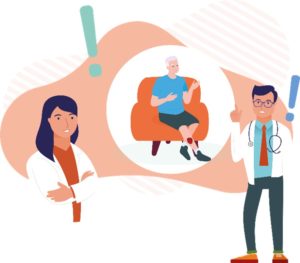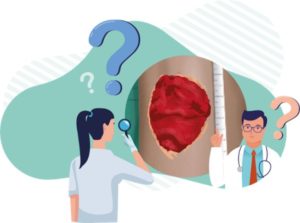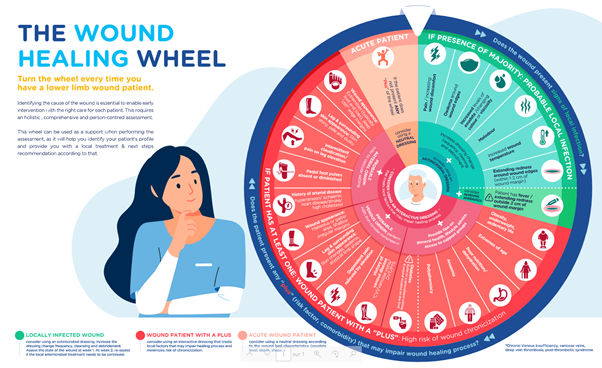
Each patient is different and needs the right treatment from the start.
Identifying individual patient needs through a holistic assessment of the patient, his/her wound, its aetiology, associated co-morbidities and the patient’s lifestyle is key to implement the right treatment from the start and ensure best patient outcomes. Considering their risk factors of impaired healing, all patients with wounds can fall into one of these categories:


- Patients with risk factors (“Patients with a plus”): Patients presenting with risk factors like advanced age, diabetes, vascular factors or reduced mobility amongst others. These patients and their wounds can look very different from one another, going from daily, acute wounds (i.e. burns, cuts…), post-operative wounds, to ulcers (i.e. leg ulcers, diabetic foot ulcers, pressure ulcers). However, because of their underlying conditions they all have in common a high risk of delayed healing and complications. Thus, the priority is to identify these patients early, refer them as soon as possible to a specialized setting and to provide them with a specific care protocol that will help treat their underlying causes, close their wounds as soon as possible and avoid complications.
- Patients with no risk factors (“Young, healthy patients”): Patients that do not present any risk factor of impaired healing, and therefore have a low probability of delayed healing and complications. The wounds that these patients present can vary from daily, acute wounds (i.e. burns, cuts…) to post-operative wounds. The priority when managing these patients is to maintain a moist environment locally for a good healing trajectory while ensuring painfree care.
At Urgo Medical, we see ourselves as ‘the healing company’, and so we believe in medical training for improving care and treatment for patients. Accordingly, we have developed a new assessment tool, the Wound Healing Wheel, to accompany clinicians in their daily practice. This wheel can be used as a support when performing the assessment, as it will help identify a patient’s profile and thus accordingly provide recommendations for local treatment and next steps.


